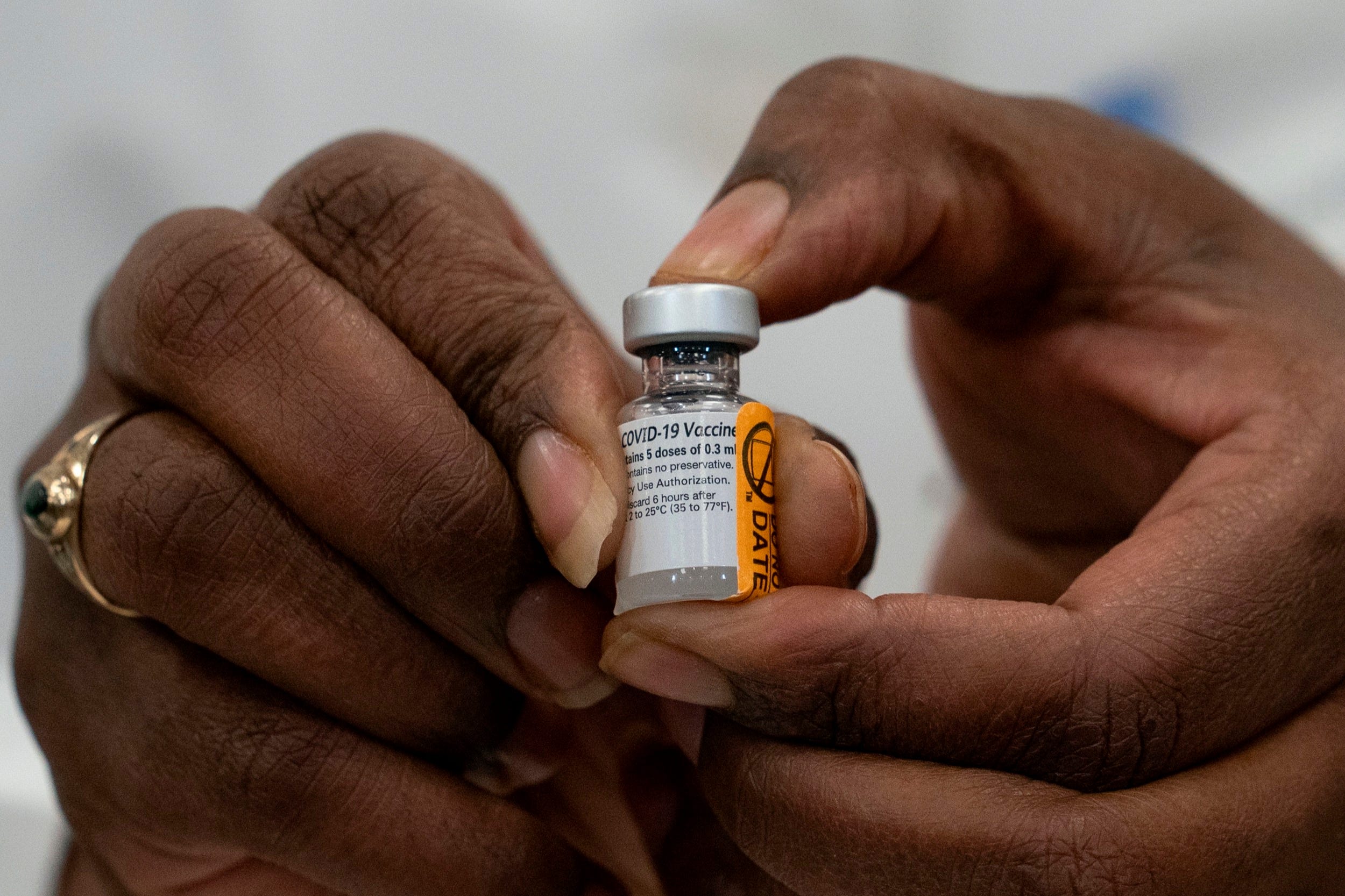
- US pharmacists are discovering that there may be an extra dose or two in each vial of Pfizer’s coronavirus vaccine, Politico reported.
- The vials are said to contain five doses, but many pharmacists found they could squeeze out a sixth or seventh. Doses per vial can vary depending on the types of needles and syringes used.
- An FDA spokesperson told Politico that those extra doses shouldn’t go to waste.
- That could mean the US supply of Pfizer’s vaccine is up to 40% bigger.
- Visit Business Insider’s homepage for more stories.
US pharmacists found a pleasant surprise in their vaccine shipments this week: Although each vial of Pfizer’s newly authorized coronavirus vaccine was supposed to contain five doses, they discovered they could squeeze out six or seven.
Manufacturers often overfill vials to account for potential spills or changes in air pressure that might affect the volume of vaccine. So when pharmacists went to prepare the shots – thawing the vials and adding sodium chloride as a diluent – they found the vials were fuller than expected.
“It was overtly clear early on there’s some extra volume,” Russell Findlay, a pharmacy manager at University of Utah Health, told Stat.
Many pharmacists threw the extra doses away, not wanting to violate the Food and Drug Administration’s emergency use guidelines, which stipulate that there are five doses per vial.
But an FDA spokesperson told Politico on Wednesday that those extra doses shouldn’t go to waste.
"Given the public health emergency, FDA is advising that it is acceptable to use every full dose obtainable," the spokesperson said.
On a Wednesday call, New York State Health Commissioner Dr. Howard Zucker informed nearly 200 healthcare providers there that they could use the extra doses, the New York Times reported.
If each vial actually yields seven doses, and all those doses are acceptable to administer, that could mean the US has a 40% bigger supply of Pfizer's vaccine than it anticipated. But the number of doses per vial probably isn't consistent.
"The amount of vaccine remaining in the multi-dose vial after removal of five doses can vary, depending on the type of needles and syringes used," Pfizer spokesperson Sharon Castillo told Politico. "At this time, we cannot provide a recommendation on the use of the remaining amount of vaccine from each vial. Vaccinators need to consult their institution's policies for the use of multi-dose vials."

Morry Gash - Pool/Getty
Some hospitals may also choose to refrain from using the extra doses, since administering them would lead more people get the first shot in the vaccine's two-dose regimen than originally planned. Providers want to ensure they'll have enough doses in the next shipments to give everyone who gets a shot their follow-up dose 21 days later.
"We're not fully confident of our future supply. Let's say we use the six but we get fewer doses in the future, we might not have enough for the second dose," Findlay told Stat. "We need to be very cautious in managing that supply."
Both the FDA and Pfizer also said that combining remaining portions from different vials to make a full dose poses a contamination risk. So pharmacists need a full extra dose from a single vial to make use of the extra vaccine.
Still, the news was a welcome surprise, since the 100 million doses of Pfizer's vaccine that the US government ordered won't be enough to immunize a majority of the population. (The quantity purchased is enough for 50 million people.)

Stephen Maturen/Getty
The government declined to purchase additional doses of Pfizer's vaccine over the summer, The New York Times reported. Even in the fall, once Pfizer's shot was a clear frontrunner, the government still didn't buy more. Members of the Trump administration have said that's because they weren't convinced that Pfizer would meet the government's distribution goals.
The Trump administration is now negotiating with Pfizer to order more doses, but even if that deal works out, there's a chance the company won't be able to deliver more in the US before June, according to the Times. The European Union bought 200 million doses on November 11, two days after Pfizer's trial results came out.
"This has been a challenging process because there have been multiple conversations happening as recently as November," former FDA Commissioner Scott Gottlieb, who is now on the board of Pfizer, told CNBC. "Now they're coming back and wanting to restart those conversations when other commitments have been made in the interim."
